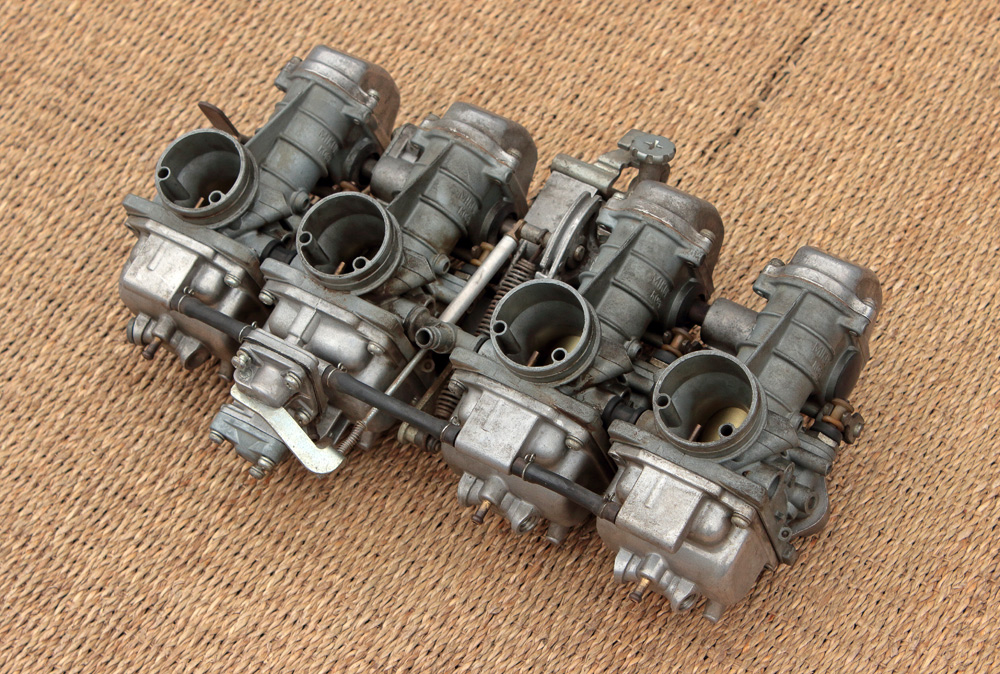Kawasaki Carburetor Maintenance: The Definitive Guide
When a carburetor gets gummed up, the fuel jet can get clogged and the float can get trapped, rendering the device inoperable.
The failure of a carburetor often results from the use of stale fuel. You may reduce the wear and tear on the carburetor by using clean, fresh fuel with a low ethanol percentage.
How to clean a Kawasaki carburetor is detailed below.
Table of Contents
Kawasaki Carburetor Warning Signs
If your Kawasaki’s carburetor is malfunctioning, the engine won’t get the right amount of fuel and air. The following symptoms are possible:
- No spark on Kawasaki motorcycle
- Lean-running causes engine failure in Kawasaki
- Kawasaki engine is jerky and unreliable
- Roaring Kawasaki motor
- Too much gas is used, and the engine smokes, on a Kawasaki

Before diagnosing, repairing, or operating, be sure you’ve read and understood all of the safety recommendations in the equipment’s operator’s manual.If you don’t feel confident in your ability to conduct the repair safely due to a lack of experience, training, or health, it’s best to call in an expert.
How to Clean a Kawasaki Carburetor in 11 Easy Steps
If you suspect a problem with the fuel system and have already checked to make sure the carburetor is receiving a sufficient quantity of fuel, there is one more test you may run to be sure.
It’s time to take the air filter out of its housing. Start your Kawasaki after spraying carburetor cleaning into the air intake. Carburetor disassembly and cleaning may be required if the engine fires up, runs briefly, and then dies.
1. Gather Kawasaki Carburetor Cleaning Materials
- Pliers
- Screwdriver
- Socket/ratchet set
- Carburetor Cleaner
- Thick wire
- Needle nose pliers
2. Have Your Carburetor Photographed
If you want to ensure proper reassembly after cleaning and disassembly, you should take pictures along the way. Since most people now have a cell phone equipped with a camera, snapping pictures is a breeze.
Take lots of pictures of your carburetor before you start taking it apart, even if you have a fantastic memory for such things.
There will be a lot of little pieces for you to handle. If you want to reassemble your carburetor properly, it will help to have visual aids like pictures to guide you.
Having these images on hand is preferable than not having any at all.
3. Turn Off the Gasoline Pumps
Turn off the Kawasaki’s gasoline pump. Turn off the fuel supply using the valve at the base of the tank. Crimp the gasoline line instead of using the mower’s valve.
4. Take Off the Choke and Throttle Cables
Take the cables out of the carburetor that control the throttle and the choke.
5. Take Apart the Housing of the Air Filter
Detach the carburetor from the air filter housing by removing the screws holding it in place.
6. Carburetor Springs Must Be Removed
Carefully unhook the carburetor’s springs. The springs will need to be replaced if you extend them. The carburetor springs may need to be twisted off with some effort.
The gasket between the engine block and the carburetor is easily damaged and must be replaced if it is ripped.
7. Take Off The Bowl Of The Carburetor
Find the bowl at the base of your carburetor now. After leaving the gasoline tank, a tiny amount of fuel is gathered here. If there is any gasoline left in the bowl, you should have a rag handy to clean it up.
To remove the bowl from the Kawasaki carburetor, first unscrew it from the bottom. A gasket surrounds the rim of the bowl. Like a rubber band, I suppose.
The gasket must not come into contact with any harmful substances, such as carburetor cleanser. If you do, replace the gasket before reinstalling the bowl.
8. Examine the Stem for Blocked Holes
In the middle of your Kawasaki carburetor, you’ll notice a stem that dangles. Old fuel might gum up the stem and prevent air from circulating. Use a strong wire to clear out the clogs, use a flashlight to locate their whereabouts.
9. Get Rid of the White Crustaining and Sticky Deposits
If you see gumming or a white crusty deposit in your carburetor, inspect the other part of the system as well.
Use a carburetor cleaner to get rid of the crusty buildup and the sticky residues. It should be noted that completely eradicating the crusty buildup is extremely unlikely.
10. Carburetor Reassembly
You can reassemble the Kawasaki carburetor once you’ve done cleaning it and verifying the condition of its parts, such as the float needle and float.
To reinstall your carburetor, simply do the opposite of what you did to take it out. Make use of the pictures you took before as a guide.
11. Add Fuel & Give It to Fill Up the Fuel Bowl
If you’re having carburetor issues, check to see that you’re not using stale gas. Make use of the clean fuel and let your fuel tank fill up.
Remove or Rebuild Your Kawasaki Carburetor If Cleaning Fails
Carburetors don’t always need to be cleaned in order to work properly. It’s possible that your carburetor needs a few minor repairs, or that the damage from using stale fuel necessitates replacing the whole thing.
Your carburetor has to be repaired or replaced. To order the right component(s), you’ll need to have your Kawasaki engine’s model and specifications on hand.
The Kawasaki small engine dealer or the equipment dealer can help you locate and order a new carburetor or a rebuild kit online.
Fuel up Your Kawasaki with new Gas and an Additive
Fill up all of your gas-powered tools with fresh gasoline and use it. Don’t leave it in the machinery for too long. Use a gasoline stabilizer, such as Sea Foam Motor Treatment, to prevent fuel problems in the future.
Read more: Kawasaki Carburetor







